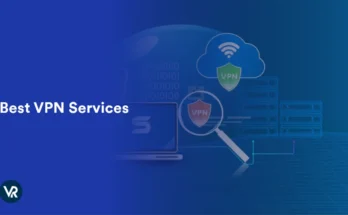Starting your own tech startup in 2025 is more than just a dream—it’s a real possibility. The digital world is expanding faster than ever, and innovation is at the heart of it all. Whether you’re an ambitious coder, a product visionary, or just someone with a bold idea, this is your moment.
But how do you build a tech startup in 2025 that actually survives, scales, and succeeds?
That’s exactly what this guide is about. We’ll walk you through realistic steps, startup strategies, funding tips, and growth hacks you need to turn your tech idea into a thriving company—even if you’re starting from scratch.
Why 2025 Is the Best Time to Start a Tech Startup
The world is changing rapidly, and 2025 offers unique advantages for building a tech startup:
- Remote work and distributed teams are the norm.
- AI tools and automation make it easier to build with fewer resources.
- Investors are hungry for scalable, tech-driven ideas.
- Digital adoption across industries is at an all-time high.
So, if you’re wondering when to jump in, the answer is simple: Now is the time.
Step 1: Find a Painful Problem to Solve
Every great startup begins with a real problem—something that frustrates people enough to pay for a solution.
Don’t just look for trends. Look for pain points.
Ask yourself:
- What do people complain about in tech forums?
- What’s broken in your daily workflow?
- What are industries struggling to digitize?
Use platforms like Reddit, Quora, and Product Hunt to validate the demand for your idea.
💡 Pro Tip: The more specific your niche, the better. Start narrow and dominate before scaling wide.
Step 2: Validate Your Startup Idea
Before you build anything, make sure people actually want what you’re offering. Validation is where most startups fail.
Here’s how to validate your idea:
- Build a landing page explaining your product.
- Run cheap ads on Google or Facebook to see if people click.
- Create a waitlist and measure signups.
- Conduct user interviews and collect honest feedback.
This will help you understand what features people care about and avoid building the wrong product.
Step 3: Build a Lean MVP (Minimum Viable Product)
Your MVP should be a simple, usable version of your product that solves the core problem.
Focus on the most critical feature. Don’t waste time on logos, animations, or fancy dashboards in the beginning.
Best tech stacks for startups in 2025:
- Frontend: React.js or Next.js
- Backend: Node.js, Python (FastAPI), or Firebase
- Database: PostgreSQL, Supabase, MongoDB
- AI Tools: OpenAI API, GPT models, LangChain
- No-Code Tools: Bubble, Glide, or Webflow for fast prototyping
Your goal is to launch fast and learn faster.
Step 4: Assemble a Rockstar Team
Even in 2025, your startup’s success depends on the people behind it.
Here’s who you need:
- The Builder (technical co-founder or full-stack dev)
- The Designer (UX/UI specialist)
- The Hustler (business/marketing/sales pro)
- Optional: AI/ML Expert (depending on product)
Look for team members who are:
- Multi-skilled
- Passionate about your mission
- Willing to work for equity or small salaries initially
Use LinkedIn, Twitter, and Discord startup communities to find your dream team.
Step 5: Choose the Right Business Model
Your startup business model is how you’ll make money. Some popular options in 2025 include:
- SaaS (Software as a Service) – recurring monthly revenue
- Marketplace model – take a cut of each transaction
- Freemium + paid upgrades
- AI-powered tools with tiered pricing
- APIs and developer tools sold as services
Pick a model that aligns with your audience and solves a real pain point.
Step 6: Secure Startup Funding
You don’t always need a ton of money to start, but some funding helps you move faster.
Top ways to fund your tech startup in 2025:
- Bootstrapping – self-funded with personal savings or early revenue
- Angel investors – early believers who invest small amounts
- Pre-seed VC funds – firms that fund startups before traction
- Startup accelerators – like Y Combinator, Techstars, or Seedcamp
- Crowdfunding – platforms like Indiegogo, Kickstarter, or Republic
- Grants for tech startups – especially in AI, green tech, or edtech
💡 Hot Tip: In 2025, many VCs are looking for AI-first startups, remote team platforms, fintech, and healthtech innovations.
Step 7: Go to Market Fast
Your product is live—now what? It’s time to get users.
Here’s a lean go-to-market strategy for tech startups:
- Launch on Product Hunt
- Submit to BetaList, Hacker News, and Indie Hackers
- Start posting daily on LinkedIn, X (formerly Twitter), and TikTok
- Reach out to influencers in your niche
- Send cold emails to target users
- Offer free trials or lifetime deals for early adopters
You don’t need millions of users—just your first 100 true fans.
Step 8: Use AI to Scale Smarter
In 2025, AI is your co-founder.
Here’s how to use AI to grow faster:
- AI customer support (chatbots, autoresponders)
- AI-generated content (blogs, emails, ads)
- AI-based analytics (predict churn, forecast sales)
- AI coding assistants like GitHub Copilot
- AI marketing tools (like Jasper, Copy.ai)
Startups that embrace automation and low-cost AI tools have a serious edge.
Step 9: Track Metrics That Matter
Forget vanity metrics like Instagram followers or site traffic. Focus on metrics that drive growth.
Key metrics for tech startups:
- CAC (Customer Acquisition Cost)
- LTV (Lifetime Value)
- Churn Rate
- ARR/MRR (Annual/Monthly Recurring Revenue)
- Active Users
- Conversion Rate
Use tools like Mixpanel, Amplitude, or Google Analytics 4 to track and improve continuously.
Step 10: Iterate and Improve Quickly
The first version of your product won’t be perfect—and that’s okay.
You must constantly listen to your users and improve fast:
- Run weekly feedback surveys
- Host monthly user interviews
- Monitor feature usage
- Ship updates regularly (weekly or bi-weekly)
In 2025, speed of iteration is your biggest advantage.
Step 11: Prepare for Scale
As your startup gains traction, it’s time to scale operations, team, and infrastructure.
Scale Smart With:
- Cloud platforms like AWS, GCP, or Vercel
- CI/CD pipelines for faster deployment
- Hiring remote talent via platforms like Toptal, Deel, and Upwork
- Partnerships and integrations with other platforms
Also, start documenting processes for growth—think SOPs, onboarding systems, and customer support scripts.
Biggest Mistakes to Avoid
Even the best ideas can crash if you fall into these traps:
🚫 Building before validating
🚫 Hiring too fast, or too slow
🚫 Ignoring customer feedback
🚫 Not knowing your numbers
🚫 Failing to market consistently
🚫 Getting distracted by features
Stay lean, stay customer-focused, and stay hungry.
Inspiring Real-World Startup Examples
Here are a few successful startups that started small and exploded:
- Notion – started as a tiny productivity app, now worth billions
- Figma – design tool built in stealth for years, acquired by Adobe
- Zapier – bootstrapped automation tool with huge growth
- Runway – AI-powered video tools redefining content creation
- Linear – simple project management built for speed and elegance
Learn from them. They were once exactly where you are now.
Final Thoughts: You Can Build It
If you’re dreaming of launching a tech startup in 2025, this is your sign to go for it.
You don’t need to be in Silicon Valley.
You don’t need millions in VC money.
You just need a real problem, a simple solution, and the grit to execute.
Use AI. Move fast. Stay humble. Build for your users.
Your startup won’t succeed overnight—but with smart steps, hard work, and continuous learning, you can absolutely turn your idea into the next big thing.
Caption and Short Description
Caption:
Build Your Tech Startup in 2025 – Turn Your Idea Into Reality 🚀
Description:
Want to start a tech startup in 2025? This step-by-step guide walks you through everything from idea to launch—validation, MVP, funding, growth, and AI tools. Learn how to build smart and scale fast!




